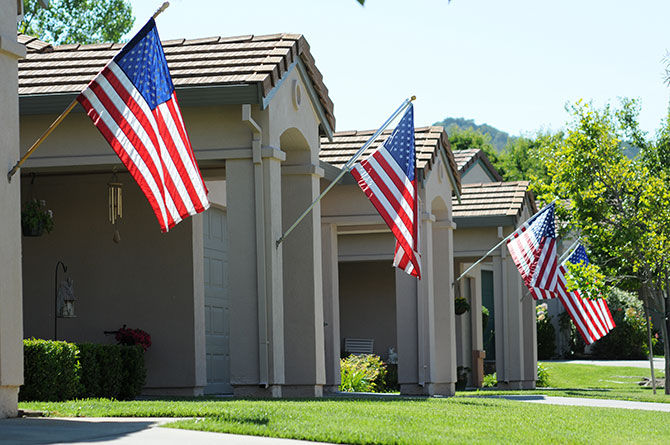When the American Revolution broke out in 1775, the colonists weren’t fighting united under a single flag. Instead, most regiments participating in the war fought under their own flags. In June 1775, the Second Continental Congress met in Philadelphia to create the Continental Army with the hopes of more organized battle against its colonial oppressors. This led to the creation of what was essentially the first “American” flag, the Continental Colors or Grand Old Union Flag. For some, this flag, comprised of 13 red and white alternating stripes and a Union Jack in the corner, was too similar to that of the British.
On June 14, 1777, the second Continental Congress took a break from writing the Articles of Confederation and passed a resolution stating: “Resolved, that the Flag of the thirteen United States shall be thirteen stripes, alternate red and white; that the Union be thirteen stars, white on a blue field, representing a new constellation.”
Note that the resolution failed to describe the location of the stripes, arrangement of the stars, and number of points on the stars. This led to a proliferation of flags such as the Bennington and Betsy Ross flags. Eight-pointed and six-pointed stars were frequently used before five-pointed ones became the standard. More than 140 years later, in 1916, President Woodrow Wilson marked the anniversary of that resolution by officially establishing June 14 as Flag Day. It is not an official federal holiday, but the president can officially proclaim its observance.
Several states and communities celebrate Flag Day with parades and other festivities. Pennsylvania and New York have state Flag Day holidays. Fairfield, Washington, has perhaps the oldest continuing Flag Day Parade, beginning in 1909.
Since founding of the United States in 1776, there have been 27 versions of the flag featuring the stars and stripes. Each new flag represented the addition of one or more states as the United States grew westward. Hawaii joined the Union as the 50th state on August 21, 1959. The 50-star flag has flown the longest of any U.S. flag; in July, it will have flown 61 years through 13 presidential administrations.
Coincidentally, June 14 is also the annual anniversary of the Bear Flag Revolt in California. In 1846, 33 American settlers and mountain men arrested the Mexican general in command at Sonoma and declared the Bear Flag Republic on the Pacific Ocean coast as an independent nation. A flag emblazoned with a bear, red stripe, star and “California Republic” was raised to symbolize Alta California’s independence from Mexico. The flag was adopted as California’s state flag upon joining the Union as the 31st state in 1850. California was annexed by the United States following the Mexican American War of 1846–1849.




